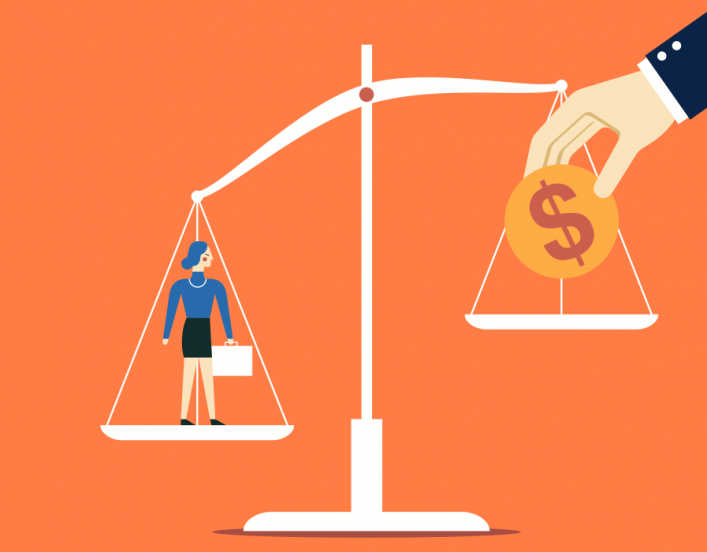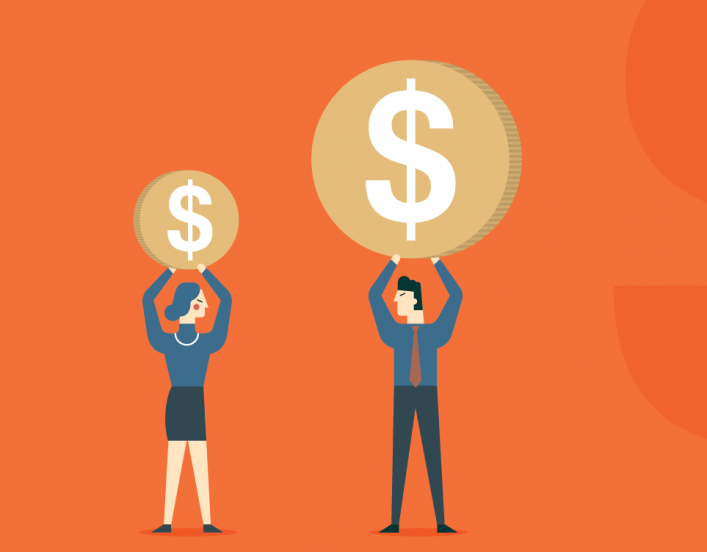Every year, in the early Spring, we mark Equal Pay Day, which symbolizes how much long er into the new year women have to work, on average, to make what men make in the previous year. We are reminded of the sad truth that, on average, women earn about 78 cents for every dollar paid to a man. And we take note of the fact that there is greater inequity among Latinas (54 cents to the dollar) and Black women (63 cents to the dollar).
We discuss how pay gaps exist in every sector — from hourly retail workers to partner-tracked lawyers. And we will lament that it will not close for more than 100 years on its current course.
But that’s only if we do nothing. Lawmakers, employers and workers all have a role in the fight for fair pay. And there are tangible, practical solutions all can take to achieve pay equity.
The pay gap matters to everyone — and should be a top priority in every community across the country. It’s time to take urgent action and work together so we can end it .
The reality is the pay gap is math, not myth. It matters every time women receive their paychecks and have less money to cover their bills, support their families or save for a home or retirement. It matters to our daughters and granddaughters, who grow up with less opportunity. It matters to spouses and partners who have to work more to help compensate for the difference. It matters to communities across the country, as women have less to contribute in spending power and taxes. It matters to employers, since closing the pay gap benefits businesses and organizations, creating a better workplace where everyone can thrive.
And it matters to the economy. Projections from the Institute for Women’s Policy Research show the US economy would produce additional income of more than $512 billion if women received equal pay. A recent McKinsey study showed that $12 trillion could be added to the global GDP by 2025 with stronger workplace gender equity practices.
At the American Association of University Women (AAUW), our 170,000 members and supporters throughout the 50 states and US territories have a goal: Close the pay gap now.
And we have a plan. No single act will do it — we need to bring the pieces together for change.
we need strong federal laws.
It’s been more than 50 years since the Equal Pay Act of 1963, prohibiting workplace wage discrimination on the basis of sex and Title VII of the Civil Rights Act, barring all employment discrimination on the basis of race, religion and national origin, as well as sex. While these laws helped to make advances, they are in need of 21st century updates.
States Need to Take Action
In short, times have changed, and laws must too. And many states are now taking action. In 2017, 42 states introduced laws to address the wage gap. Their strategies ranged from banning salary histories to ensuring employees have vital access to salary information in order to identify if they are being paid unfairly. Five states and Puerto Rico succeeded in passing their laws. This year, per AAUW’s internal monitoring, 38 states have pay equity legislation under consideration, with a new law passing in Washington state just last month.
we must change employer practices
Growing numbers of employers recognize fair pay and good benefits are not just good for employees, they are good for business and bottom lines. Businesses and organizations like Salesforce, Delta, LUNA and Starbucks are taking actions — conducting pay audits and banning the use of prior salary histories, which perpetuates cycles of underpay.
We need to support and empower women
Third, we must support women in advocating for themselves. At AAUW, we are launching a new commitment to train 10 million women to negotiate their financial futures by 2022. Through AAUW’s Work Smart program, we will give women the skills they need to effectively understand their market worth — based on experience and accomplishments — and the tools and confidence to negotiate for it.
In workshops around the country, we have seen that when women negotiate for higher pay, it can result in more income for themselves and their families. While you can’t negotiate around discrimination, this effort will help accelerate change for women and the broader movement for equal pay.
We are calling on mayors and governors around the country to join us. Thanks to leadership in Boston, Washington, D.C., Tempe, San Francisco, Long Beach and the Commonwealth of Massachusetts, we are off to a good start. Beginning with Mayor Marty Walsh in Boston, all are partnering with AAUW to provide salary negotiation workshops that are helping women at every level of their career. Take Maryanne, a 40-year-old mother of two and nonprofit media company employee who negotiated for a $22,000 raise once she became aware she was paid less than her less-experienced male counterparts for equal work.
City by city and state by state, together we can change the paradigm by passing strong pay equity laws and engaging employers and individual employees in the fight for equal pay.
A version of this article was originally published by CNN.
Related
Pay Gap FAQs

Fast Facts: The Gender Pay Gap


